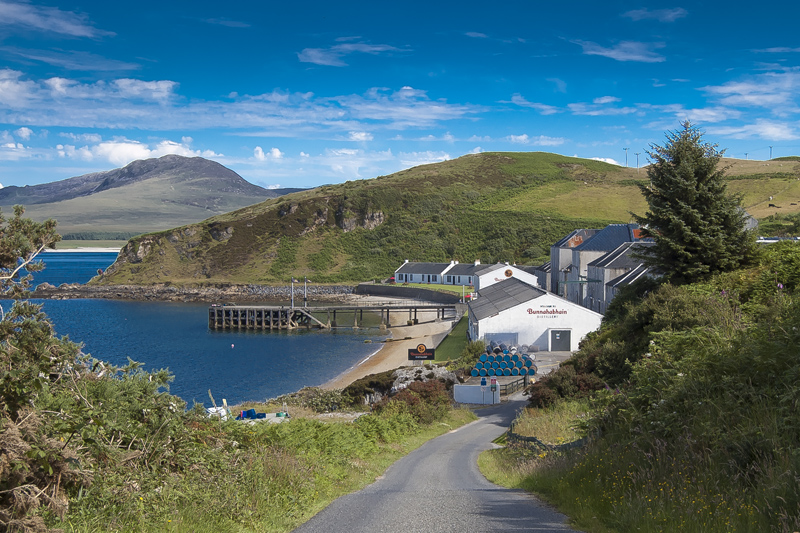Bunnahabhain
2016-07-27
 Bunnahabhain in a nutshell:
Bunnahabhain in a nutshell:founded: 1881 (production since 1883)
owner: Burn Stewart Distillers (Distell Group Ltd.)
region: Islay
location: 55° 52’ 58.5” N 06° 07’ 32” W
status: active
capacity: 2,700,000 litres
washbacks: 6 Oregon pine
stills: 4
source of water: Margadale River
tours: yes
Bunnahabhain
In order to reach Bunnahabhain, a village and a distillery on the north-eastern shore of the isle of Islay, one has to take a seemingly endless journey along a road winding amidst heathers, with a breathtaking view of the neighbouring island of Jura, just across the Sound of Islay (or Coal Ila, if you will). Although the road can be a bit demanding on the driver, being a passenger on such a trip is sheer pleasure.
At the end of the road, at Bunnahabhain Bay, there lies a distillery named after the bay, perched on its very shore – Bunnahabhain. In fact, both the road and the neighbouring residential buildings were constructed in close relation with the distillery and to serve its needs. The location was chosen in 1881 by William Robertson, Bunnahabhain’s founder, as a perfect spot for putting his vision into practice. Production commenced here in 1883.
For nearly a century the distillery operated more or less uninterruptedly, with the only production break in the years 1982-84. In 1887 the Islay Distillers Company Ltd that ran Bruichladdich merged with William Grant & Co to create Highland Distillers, which in turn was taken over by Edrington in 1999. One of the results of that takeover was mothballing Bunnahabhain, with whisky production taking place only for a couple of weeks a year. In 2003 the distillery was sold to Burn Stewart Distillers for the sum of 10 million pounds. The transaction included also the Black Bottle brand, a whisky with a high Bunnahabhain content.
Although the distillery’s production capacity is twice as big as that of Ardbeg, and comparable (slightly higher) to Lagavulin, Bunnahabhain never made itself a big name with the whisky enthusiasts. That was probably partly due to the fact that until recently was a non-peated whisky, and as such uninteresting to a large part of the whisky audience, but mainly because the vast majority of its production was destined for blending, which did not give the malt much chance to mark its existence, and an apparent lack of a marketing policy that would promote it. The situation began to change in the new millennium, with the growing interest in malt whisky, especially if it comes from Islay, and as a result of an application of a more pro market attitude towards the brand – chill-filtration was abandoned, as was whisky colouring, the whisky got to be bottled at 46.3% vol., and there have been peaty expressions of Bunnahabhain making their way to the market, as well as cask strength editions. As a result, the production doubled in the last years and the brand has been gaining more and more attention.
Nowadays the core expression is Bruichladdich 12yo, with the range being complemented with the 18yo and 25yo. Moreover, a 10yo peated Toiteach was launched in 2008, and another peaty whisky from Bunnahabhain, Ceobanach, made its debut in 2014. There is also a number of expressions bottled exclusively for the travel retail market, vintage editions, limited releases, etc. Bunnahabhain is definitely no longer a malt filler for Famous Grouse, Cutty Sark and Black Bottle.
Show more entries from
July 2016